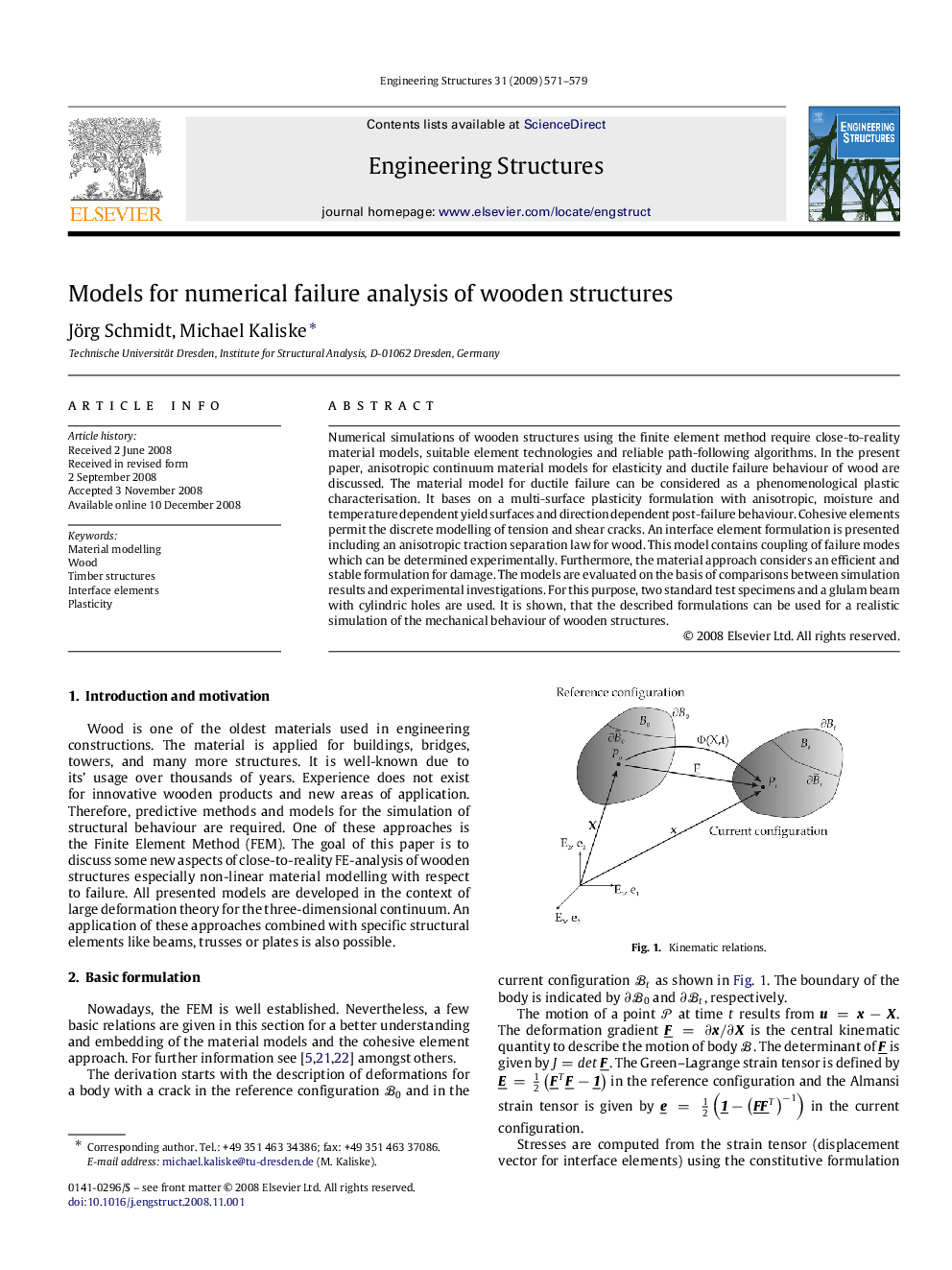| Article ID | Journal | Published Year | Pages | File Type |
|---|---|---|---|---|
| 268895 | Engineering Structures | 2009 | 9 Pages |
Numerical simulations of wooden structures using the finite element method require close-to-reality material models, suitable element technologies and reliable path-following algorithms. In the present paper, anisotropic continuum material models for elasticity and ductile failure behaviour of wood are discussed. The material model for ductile failure can be considered as a phenomenological plastic characterisation. It bases on a multi-surface plasticity formulation with anisotropic, moisture and temperature dependent yield surfaces and direction dependent post-failure behaviour. Cohesive elements permit the discrete modelling of tension and shear cracks. An interface element formulation is presented including an anisotropic traction separation law for wood. This model contains coupling of failure modes which can be determined experimentally. Furthermore, the material approach considers an efficient and stable formulation for damage. The models are evaluated on the basis of comparisons between simulation results and experimental investigations. For this purpose, two standard test specimens and a glulam beam with cylindric holes are used. It is shown, that the described formulations can be used for a realistic simulation of the mechanical behaviour of wooden structures.
